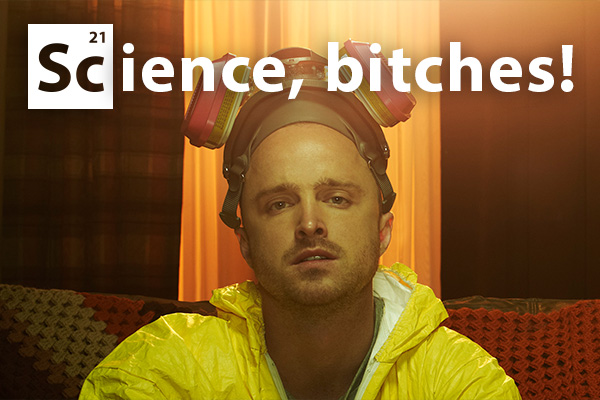Science, Bitches! | Issue 04
Mosh pits & particle physics
Take note, young grasshoppers; the science doesn’t stop when you leave the lecture theatre. That wasn’t a bad joke; that was a somewhat abridged version of an epiphany had by one Jesse Silverberg. He even wrote a peer reviewed paper on it, “Collective motion of moshers at a heavy metal concert.” By watching videos of some serious heavy metal moshing, he convinced his colleagues to help him look at people in the way that we look at particles.
Fluid dynamics is a pretty key part of physics, looking at the way liquids and gases move. It’s handy to know when you’re pumping a bunch of oil through a tube and hoping it won’t explode. It’s quite nice when you know how the air is going to travel around an airplane wing. Even if you’ve never heard the term, fluid dynamics really are all around you.
So in order to understand what the fluids are doing, you need to figure out what each molecule is doing, and how they’re all interacting. Physicists have been investigating this for ages – Newton would have loved particle image velocimetry! Using it, we can follow individual molecules by putting a few tagged particles in a fluid and tracking them. This allows us to figure out what the rest of the particles are up to, and build a model to explain it all. But what if the data we plug in isn’t about atoms, but about people?
In almost any situation, you don’t get a lot. People have a lot of reasons for moving about in the way they do, and it’s very rare that equations accounting for viscosity, turbulence or non-Newtonian fluids have anything to do with it. But it seems that in mosh pits, when everyone is moving in random directions, they act just like atoms in a moving fluid.
Cool, whatever, you never plan to be in the mosh pit of a heavy metal gig, so who cares? But no one plans to be in an emergency like a fire or earthquake, and it seems that it could be modeled in the same way – a panicked situation with large numbers of people moving quickly and randomly. If this turns out to be the case, it would mean we could predict how a large group of people will move when shit goes down. And that means we can plan the best way to get everybody out and unharmed from a burning building or an earthquake in the city centre, from designing the exits to mapping the ambulance routes.
Now, this is not the first time we’ve tried to model groups of living organisms with simple physical laws – it seems to be a favourite pastime of some academics – but most of the time it doesn’t work. Pretending that animals move randomly in a swarm is like pretending that Unicol is chlamydia-free. Wish all you want; it’s just not true. But if you start to allow for interaction, you can see how incredibly complex movements can emerge from lots of simple “particles” if they can have basic communication, and respond to the environment. Things like nerve cells growing into a brain, or cancer cells migrating – or even, apparently, political movements. I don’t quite believe the last claim, but then who would have thought a mosh pit was a great place for physics research? That’s science, bitches.



